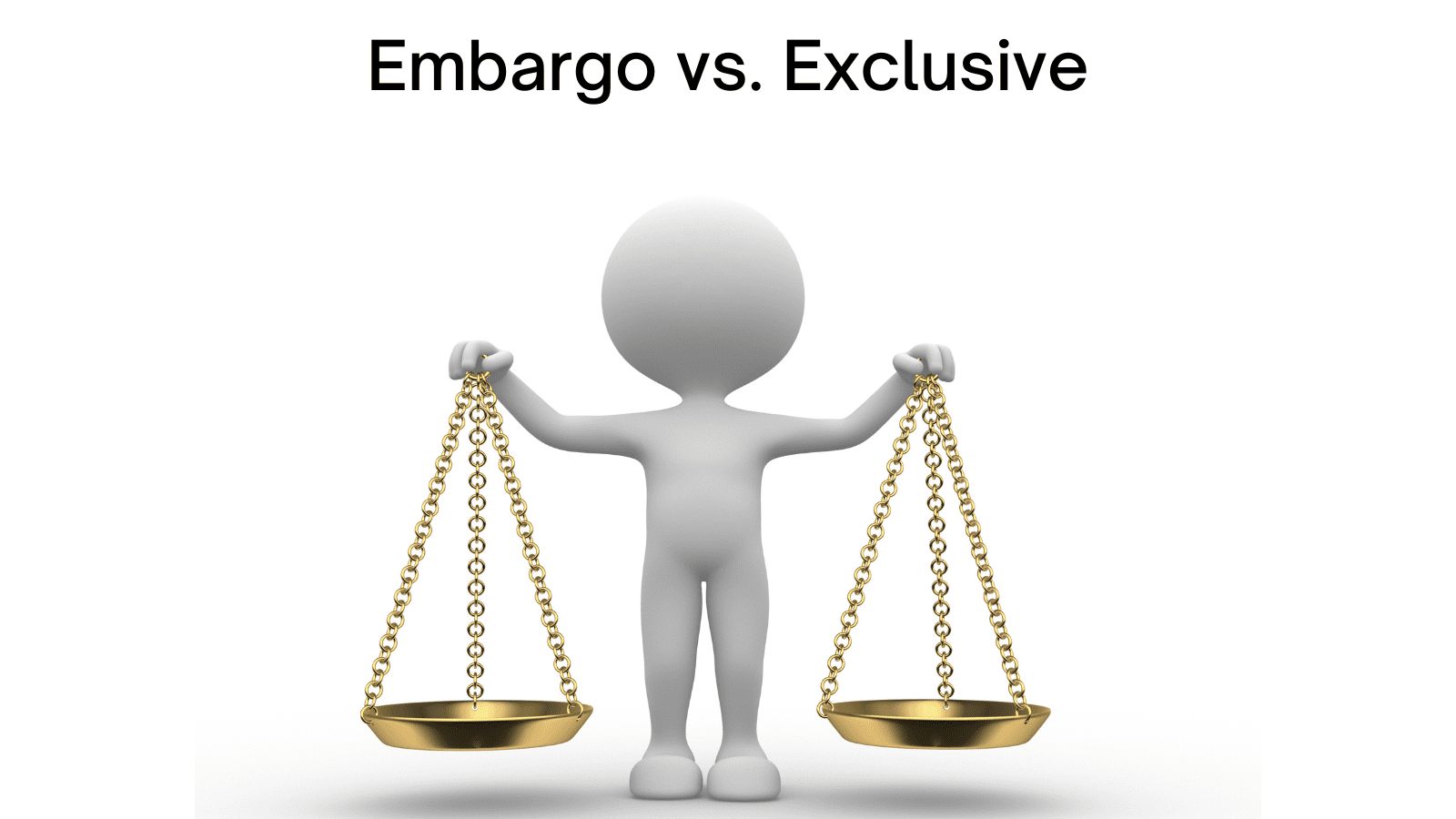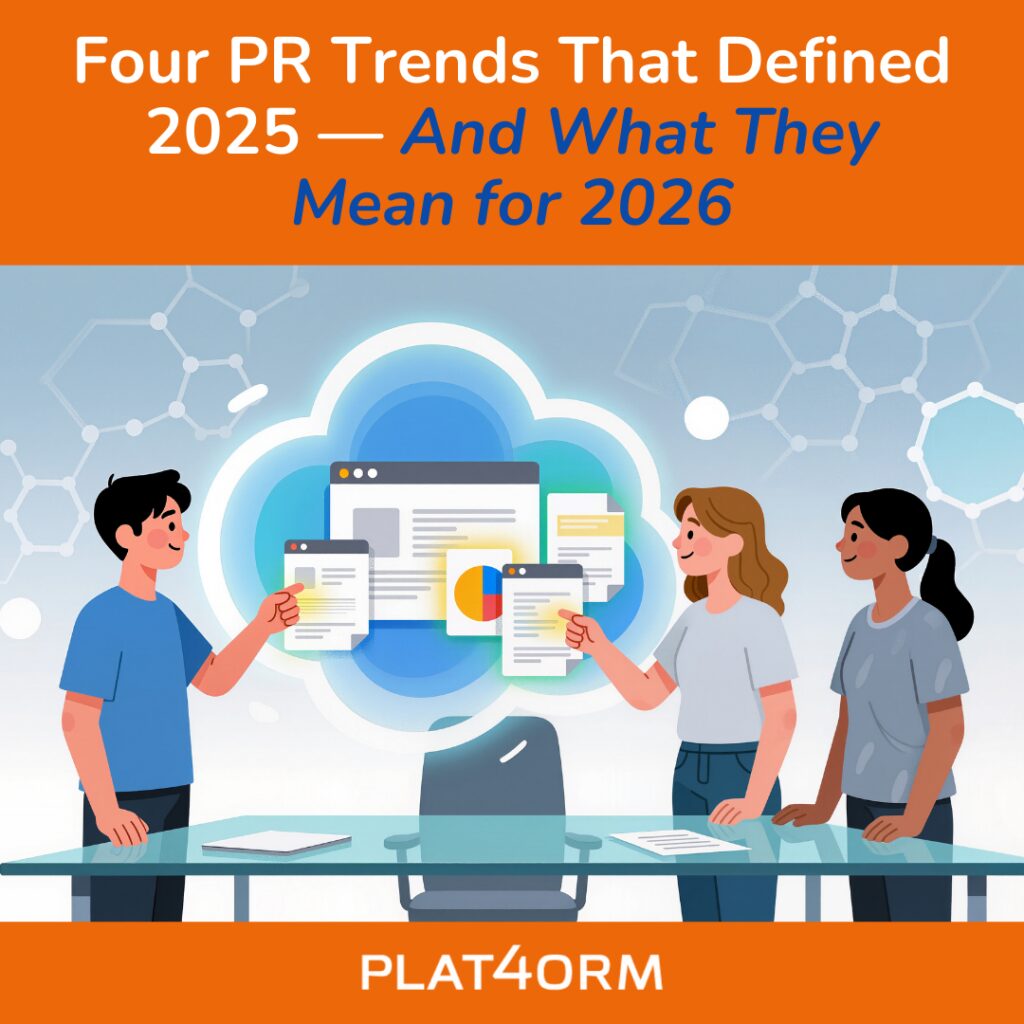
You’re the CEO of a company announcing an acquisition, a big win, or an innovative project. You think this information will snare solid play in well-known news outlets. Now, the question becomes how you get the news out there; are you going to offer reporters an exclusive, or distribute the info to them under an embargo? And what’s the difference?
True, they both start with the letter “E.” And a PR pro will tell you that both are tools that can help get your story in front of your targeted audience at the right time to get the most important coverage. But it’s important to recognize how each one is best used.
What are Exclusives
An exclusive is exactly that – you\’re offering one reporter or outlet, and only one reporter and outlet, exclusive news that they will release at an agreed-upon time. Whether the news will be offered to other outlets after the appearance of the story is something that should be worked out with that outlet before the exclusive is agreed on.
Exclusives can yield awesome results for outlets, PR pros and clients; the outlet gets a story no one else has and the PR pro gets significant coverage for the client. Reporters are constantly on the lookout for stories that are going to set them apart from their competition – the ones that offer the best information and snare the most readers or views. PR pros who reliably make that kind of information available to journalists win plenty of brownie points in the press box, which helps make it more likely journalists will read your pitches and cover your clients down the road.
But exclusives can be challenging, too; if a story leaks, the outlet no longer has a leg up on the competition and the reporter can end up feeling burned – never a happy situation when PR pros are trying to build good relationships with media for their clients. And watching a promised exclusive in a top-tier outlet dissolve because a breaking news story just demanded the reporter’s attention can be disheartening for the PR pro.
What are Embargoes
Embargos, on the other hand, give several journalists the same information with the implied agreement that the news will be released at a specified time and date. This is very common with announcements that are timed to an event, such as companies’ quarterly or annual reports, or press conferences. An embargo can help ensure the client’s news gets wide coverage and serves in support of an event, and reporters often appreciate the opportunity to research and even sometimes write the bulk of a story in anticipation of an event or announcement. The knowledge that all outlets are getting the information at the same time can give reporters a chance to explore new angles, conduct additional interviews, and offer readers/viewers information their competitors might not have.
Yet, an embargo can majorly backfire if outlets don’t all honor it; one outlet going rogue is enough to make reporters feel they’ve been deceived by the PR pros who weren’t diligent enough with the rogue outlet about the embargo’s parameters. Or reporters might feel that because all the other outlets have the information anyway, there’s no point in waiting and they might as well print it now to beat the competition. The mistrust that results on both sides from either situation can be toxic for future media relations.
Advising Clients on the Best “E” Approach
If a client comes in and wants to use either approach, the skilled PR pro must make sure that client knows the difference between an exclusive and an embargo as well as their inherent benefits and risks; this is the advice clients are looking for. They need to know that putting an embargo on every one of their announcements looks uninformed and lowers the likelihood they’ll be honored. Let them know that insisting to reporters their largely unknown company’s name change – with no other news attached to it – is worthy of an exclusive will only end in wasted time, irritated reporters who won’t want to give the company the time of day going forward, and a frustrated client who’s wondering why they can’t get any coverage.
Above all, clients need and deserve honesty and transparency so they understand the landscape they’re trying to navigate. At Plat4orm, we work closely with business leaders and take pride in offering careful analysis and tightly tailored strategies to help them reach their PR and marketing goals. Encouraging clients to push out news of their exciting innovations, counseling them to wait for a better opportunity for media play, or helping them steer through a crisis is what we do every day. Managing clients’ expectations of what different strategies will net them is just as important, including making the difference between an exclusive and an embargo crystal clear to help with long-term understanding.
So, when deciding whether your news should be offered to outlets as an exclusive or under embargo, consider your goal; is it getting that top-tier, prestigious outlet to run a prominent feature, or is it widely disseminating information connected to an event or announcement? Depending on your answer, the right “e” can be your ticket to expanding your audience and raising your profile.

